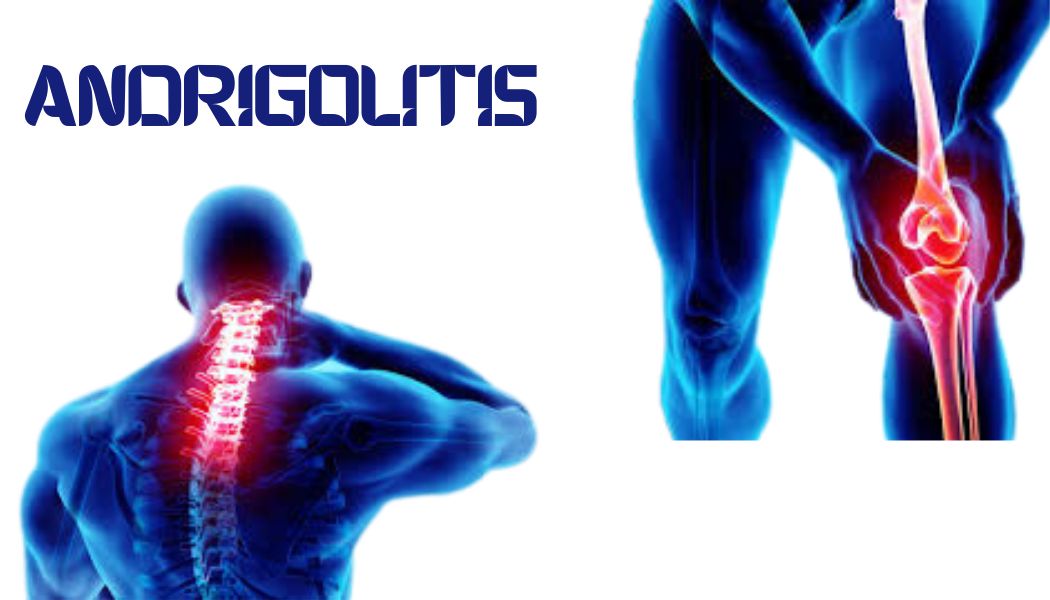
Introduction
Andrigolitis is a relatively lesser-known medical condition that affects the connective tissues in the body, leading to inflammation, pain, and various other symptoms. While it may not be as commonly discussed as conditions like arthritis or lupus, it can significantly impact the quality of life of those who suffer from it. This article aims to provide an in-depth understanding of Andrigolitis, its symptoms, causes, treatment options, and answer some of the most frequently searched questions about the condition.
What is Andrigolitis?
Andrigolitis is a chronic inflammatory condition that primarily affects the connective tissues, which are the tissues that support, bind, or separate other tissues and organs. The inflammation can cause pain, swelling, and damage to the affected areas, leading to a range of symptoms that can vary in severity from mild discomfort to debilitating pain.
Symptoms of Andrigolitis
The symptoms of Andrigolitis can vary widely among individuals, depending on the severity of the condition and the specific tissues affected. Common symptoms include:
- Pain and Swelling: Persistent pain and swelling in the joints, muscles, or other connective tissues.
- Stiffness: Stiffness in the affected areas, particularly after periods of inactivity or rest.
- Fatigue: Chronic fatigue and a general feeling of being unwell.
- Weakness: Muscle weakness and a decreased ability to perform daily activities.
- Fever: Low-grade fever that may accompany periods of inflammation.
- Loss of Function: In severe cases, loss of function in the affected areas, such as limited range of motion or difficulty in movement.
Causes of Andrigolitis

The exact cause of Andrigolitis is not well understood, but it is believed to involve a combination of genetic, environmental, and autoimmune factors. Some potential causes and risk factors include:
- Genetics: A family history of connective tissue disorders or autoimmune diseases may increase the risk of developing Andrigolitis.
- Autoimmune Response: The body’s immune system mistakenly attacks its own tissues, leading to inflammation and damage.
- Environmental Triggers: Exposure to certain environmental factors, such as infections, toxins, or physical trauma, may trigger the onset of Andrigolitis in susceptible individuals.
Diagnosing Andrigolitis
Diagnosing Andrigolitis can be challenging due to its nonspecific symptoms and the overlap with other connective tissue disorders. A comprehensive diagnosis typically involves:
- Medical History: A detailed medical history, including a review of symptoms, family history, and any potential triggers.
- Physical Examination: A thorough physical examination to assess the affected areas and identify signs of inflammation or damage.
- Laboratory Tests: Blood tests to check for markers of inflammation, autoimmune activity, and other potential underlying causes.
- Imaging Studies: Imaging studies, such as X-rays, MRI, or ultrasound, to visualize the affected tissues and assess the extent of damage.
Treatment Options for Andrigolitis
While there is no cure for Andrigolitis, treatment focuses on managing symptoms, reducing inflammation, and improving the quality of life. Treatment options may include:
- Medications: Anti-inflammatory drugs, pain relievers, and immunosuppressive medications to control inflammation and alleviate symptoms.
- Physical Therapy: Physical therapy to improve mobility, strength, and function in the affected areas.
- Lifestyle Modifications: Lifestyle changes, such as regular exercise, a healthy diet, and stress management techniques, to support overall health and well-being.
- Surgery: In severe cases, surgical intervention may be necessary to repair or replace damaged tissues.
Frequently Asked Questions (FAQs) About Andrigolitis
1. What is Andrigolitis?
Answer: Andrigolitis is a chronic inflammatory condition that affects the connective tissues in the body, leading to pain, swelling, and other symptoms.
2. What are the common symptoms of Andrigolitis?
Answer: Common symptoms include pain and swelling in the joints and muscles, stiffness, chronic fatigue, muscle weakness, low-grade fever, and in severe cases, loss of function in the affected areas.
3. What causes Andrigolitis?
Answer: The exact cause is unknown, but it is believed to involve genetic, autoimmune, and environmental factors. A family history of connective tissue disorders or autoimmune diseases may increase the risk.
4. How is Andrigolitis diagnosed?
Answer: Diagnosis involves a combination of medical history, physical examination, laboratory tests to check for markers of inflammation and autoimmune activity, and imaging studies to assess the affected tissues.
5. Can Andrigolitis be cured?
Answer: There is no cure for Andrigolitis, but treatment focuses on managing symptoms, reducing inflammation, and improving the quality of life.
6. What are the treatment options for Andrigolitis?
Answer: Treatment options include medications (anti-inflammatory drugs, pain relievers, and immunosuppressive medications), physical therapy, lifestyle modifications, and in severe cases, surgical intervention.
7. Is Andrigolitis hereditary?
Answer: While there is no definitive evidence that Andrigolitis is hereditary, a family history of connective tissue disorders or autoimmune diseases may increase the risk of developing the condition.
8. Can lifestyle changes help manage Andrigolitis?
Answer: Yes, lifestyle changes such as regular exercise, a healthy diet, and stress management techniques can help manage symptoms and support overall health and well-being.
9. What types of doctors treat Andrigolitis?
Answer: Rheumatologists, who specialize in autoimmune and inflammatory conditions, are typically the primary doctors who treat Andrigolitis. Other healthcare professionals, such as physical therapists and pain management specialists, may also be involved in the treatment plan.
10. How can I cope with the chronic pain of Andrigolitis?
Answer: Coping strategies for chronic pain include following a prescribed treatment plan, practicing relaxation techniques, staying physically active, seeking support from family and friends, and participating in support groups for individuals with chronic pain or similar conditions.
11. Are there any alternative therapies for Andrigolitis?
Answer: Some individuals find relief from alternative therapies such as acupuncture, chiropractic care, massage therapy, and herbal supplements. However, it is important to discuss any alternative treatments with a healthcare provider to ensure they are safe and appropriate for your specific condition.
12. Can Andrigolitis lead to other complications?
Answer: If left untreated, Andrigolitis can lead to complications such as joint damage, muscle atrophy, decreased mobility, and a reduced quality of life. Early diagnosis and appropriate treatment are essential to prevent or minimize these complications.
13. How can I stay informed about the latest research and treatments for Andrigolitis?
Answer: Staying informed about Andrigolitis can be achieved by following reputable medical websites, joining support groups or organizations focused on connective tissue disorders, and regularly consulting with your healthcare provider for updates on the latest research and treatment options.
14. Is Andrigolitis a common condition?
Answer: Andrigolitis is a relatively rare condition compared to other connective tissue disorders. However, its impact on those who suffer from it can be significant, and awareness is important for early diagnosis and treatment.
15. How can I support a loved one with Andrigolitis?
Answer: Supporting a loved one with Andrigolitis involves offering emotional support, assisting with daily activities as needed, encouraging adherence to their treatment plan, and helping them stay informed about their condition. Additionally, being patient and understanding their limitations can greatly improve their quality of life.
Conclusion
Andrigolitis is a challenging condition that affects the connective tissues, leading to a range of symptoms that can significantly impact a person’s quality of life. Understanding the symptoms, causes, and treatment options is crucial for managing the condition effectively. By staying informed and seeking appropriate medical care, individuals with Andrigolitis can improve their quality of life and manage their symptoms more effectively.
This comprehensive guide and the frequently asked questions aim to provide valuable insights into Andrigolitis, helping patients and their loved ones navigate this complex condition. Remember, early diagnosis and a proactive approach to treatment can make a significant difference in managing Andrigolitis and maintaining a good quality of life.







